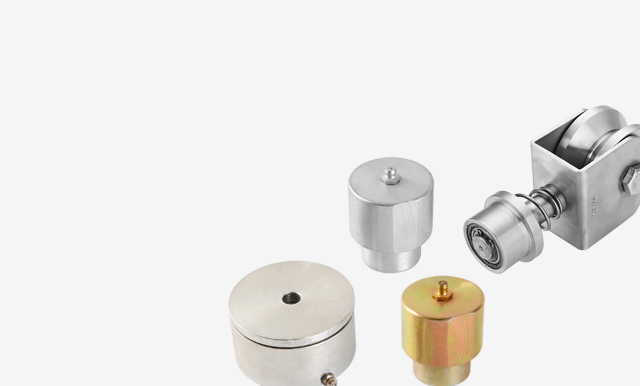No. 200 Gaoxin RD, Shanghua St, Lanxi, Zhejiang, P. R China
The Smooth Surface High Precision Rack Pinion Gear is a high-performan...
See DetailsSliding shower door wheels play a critical role in ensuring the smooth and quiet operation of glass shower enclosures. These wheels are often small in size, but their design and manufacturing demand precision engineering due to the nature of their use in humid, enclosed environments where appearance and functionality are equally important.

Material Selection:
The manufacturing process begins with selecting suitable materials. Typically, stainless steel, brass, and high-quality plastic (such as nylon or acetal) are used for the wheel housings and rolling surfaces. These materials are chosen for their corrosion resistance, lightweight nature, and durability in moist environments.
Precision Molding or Machining:
Plastic components are injection molded to form consistent, smooth, and accurately dimensioned shapes. For metal parts, CNC machining is commonly used to produce precision brackets, axles, and mounting hardware.
Assembly Process:
Bearings—usually sealed ball bearings for longevity—are inserted into the wheels to reduce friction. The wheel, bearing, and bracket are then assembled in a controlled setting to ensure tight tolerances and proper alignment. Quality control at this stage involves load testing and rotational smoothness checks.
Surface Finishing:
Depending on design, exposed metal parts may undergo electroplating, anodizing, or polishing to improve corrosion resistance and visual appeal. The finished products are then packaged with mounting instructions and fasteners for consumer or contractor use.
Overall, the production of sliding shower door wheels combines material engineering, manufacturing accuracy, and quality control to deliver a small but essential component that supports both form and function in the bathroom.
Heavy Duty Rolling Metal Gate Wheels
Heavy duty rolling metal gate wheels are designed to bear significant loads and withstand constant movement over potentially uneven or outdoor surfaces. These wheels are often found on industrial gates, security barriers, and large sliding fences, where reliability and structural integrity are paramount.
Design and Material Considerations:
The typical wheel is made from solid steel or cast iron, often with a V-groove or flat profile depending on the track design. Some models incorporate a polyurethane or rubber outer layer to reduce noise and vibration on concrete or metal tracks. For heavy gates, dual-bearing designs or reinforced hubs are used to distribute loads effectively.
Load Capacity and Bearing Systems:
Unlike smaller sliding door wheels, gate wheels must manage high static and dynamic loads. The inclusion of heavy-duty ball or roller bearings helps ensure smooth operation even when the gate is fully loaded. In many applications, grease fittings (zerk fittings) are added for easy maintenance and lubrication, further extending the service life.
Track Compatibility:
These wheels are specifically designed to match with track systems—either surface-mounted or recessed. The alignment between the wheel profile and the track groove is essential to prevent derailment and wear. Tracks are typically made of galvanized or stainless steel to withstand outdoor conditions.
Environmental Durability:
Given their exposure to weather, UV rays, and sometimes corrosive environments, gate wheels are often galvanized, powder-coated, or treated with anti-rust coatings. Proper drainage and debris clearance features are also considered during the design phase to prevent operational issues over time.
Maintenance and Replacement:
Despite their robust build, gate wheels require periodic maintenance. Inspecting for bearing wear, debris buildup, and alignment is important to ensure safe and continuous function. Replacement is typically straightforward, with standardized mounting plates and bolts for ease of service.
Heavy duty rolling metal gate wheels are built to perform under demanding conditions, offering reliable movement for gates that serve vital security and access control functions.